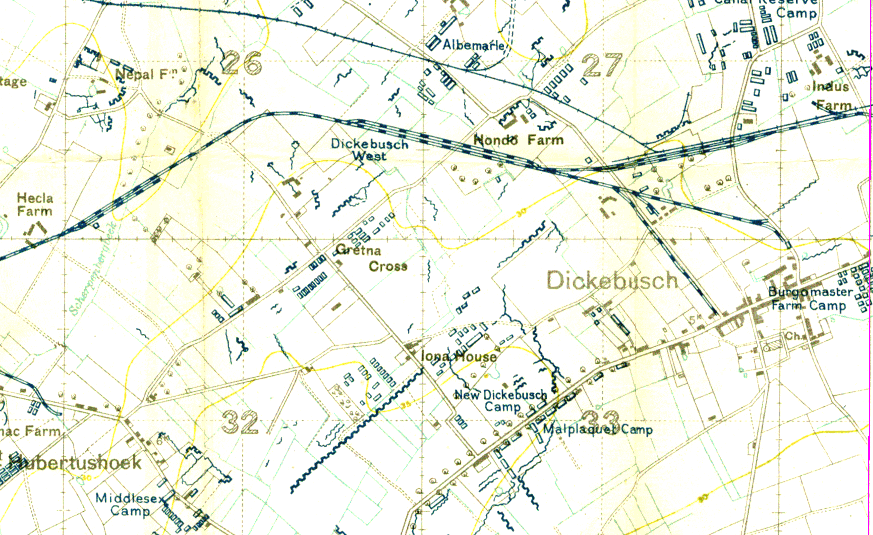Andrew Waldie
- Admin
- Oct 16, 2022
- 3 min read
Updated: Sep 23

S/18324 Private
1st Infantry Labour Company, Seaforth Highlanders, (12th Company, Labour Corps)
Age: 19 Date of Death: 26.6.17
Family history: Son of Robert and Catherine Waldie, Magdalene Place, Grangepans, Bo’ness. He had a brother, Edmund, and sisters, Cecelia, Janet, Catherine, and Margaret, who died in infancy in 1916 with Andrew having to register the death as his father was absent serving with the Royal Garrison Artillery. His father enlisted in November 1914, and was to be discharged in April 1916, as unfit for military service, and was issued with the Silver War Badge and returned to his prior employment as a dock labourer.
Prior to enlisting Andrew was employed by Cochrane Brothers, Bo’ness. He enlisted in the 1st Infantry Labour Corps, Seaforth Highlanders in March 1917. His Company was transferred to the 12th Company, Labour Corps in April 1917.

Silver War Badge
The Silver War Badge, sometimes called the Silver Wound Badge, was issued to servicemen honourably discharged from the forces under King’s Regulations after September 1916, because of wounds or sickness. Around the front of each badge is written For King and Empire. Services Rendered. Each badge carries a unique number, it is possible to trace the recipient from that number. It was issued as a form of recognition to the men who no longer wore a uniform and were being mistaken for those who had never joined up.
What was a Labour Company?
The Labour Corps Company was defined in Army Orders when the Labour Corps came into existence in 1917. Its standard composition was defined in Army Council Instruction 611 of that year.
Composition
1 Major, commanding the company
4 Lieutenants or Second Lieutenants
1 Company Sergeant Major and 1 Company Quartermaster
Sergeant
8 Sergeants
18 Corporals (of which, 1 a Corporal-Cook and 1 a Corporal-Clerk)
461 Privates (of which 6 were appointed to Lance-Corporal)
6 officers’ batmen (normally Privates)
Attached
1 Medical Officer of the Royal Army Medical Corps
8 Drivers of the Army Service Corps (of which 1 a Corporal)
Organisation
The company was structured into:
Company Headquarters
4 Platoons (under a Lieutenant or Second Lieutenant), each of 2 Sections (under a Sergeant). Each Section made up of 2 Sub-Sections (under a Corporal).
Transport
The company was provided with three carts and four General Service wagons and a total of 13 draught and heavy draught horses. The officer commanding would be provided with a riding horse or bicycle at his discretion.
The action leading to his death
June 1917 found the 1st ILC (12th Company, Labour Corps) located in the Dickebusch area working primarily on broad gauge and light railways, dangerous work that attracted attack from German heavy guns. Andrew was killed by shell fire when the Company was working in the field.

Another Bo’ness man, Private Archibald Dearie , was also serving in the same Battalion and would have known Andrew as they were serving at the same time. He was killed by shell fire in the same area on 1 September 1917.
Company CO and Other Officer Court Martialled
The stress of working in such close proximity to the enemy guns took its toll on the Company Commanding Officer, Captain Ripon. On 9 August, he was found guilty at a Field General Court Martial (FGCM) of drunkenness and sentenced to forfeiture of seniority and a severe reprimand. Another officer, 2nd Lieutenant William Forgan, faced a FGCM charged with conduct to the prejudice of good order and military discipline and drunkenness. He was acquitted on the first charge and convicted of drunkenness and sentenced to dismissal. On 9 October the sentence was commuted to severe reprimand although ‘the Council further decided that the officer was to be called upon to resign his commission, adjudging him unfit to hold H.M.’s commission.’ He resigned his commission on 16 November 1917.
Medals
The British War Medal, Victory Medal

Headstone
His headstone does not mention he was a member of the Labour Corps. In 1919 it was decided that the headstone of a member of the Labour Corps, who previously served in any other unit, should record his connection with his previous regiment.







Comments